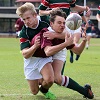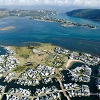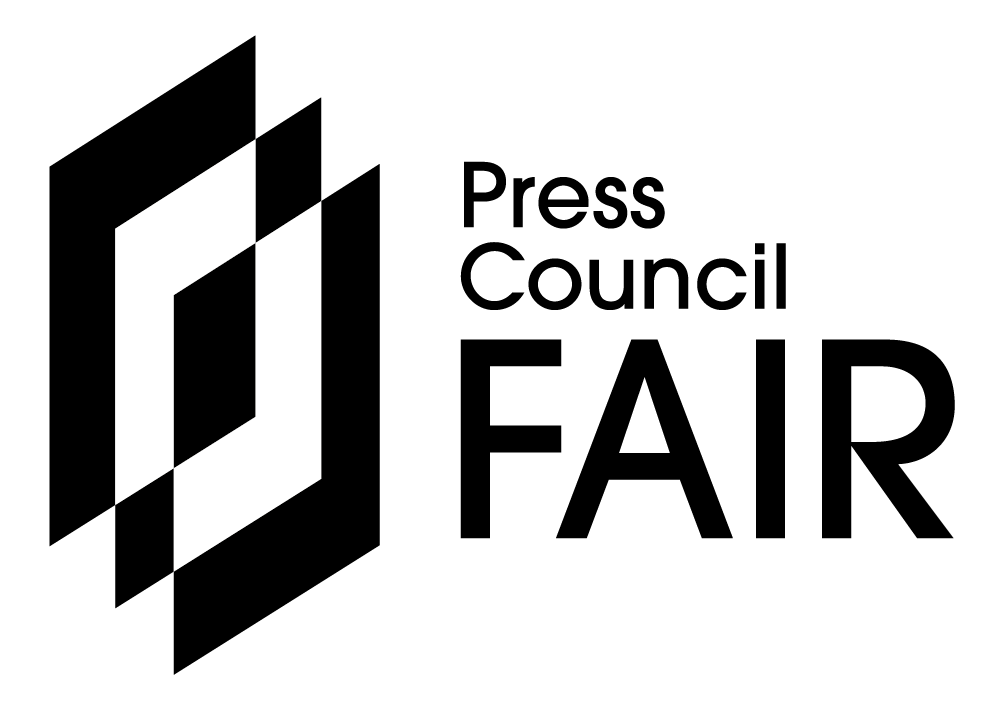KNYSNA NEWS - It is not safe to swim in certain parts of the Knysna Estuary. This announcement was made earlier this week by the municipality and reiterated by SA National Parks (Sanparks).
Signage erected at four spots around the estuary warn recreational users not to fish, collect bait or swim there.
Knysna park manager Megan Taplin confirmed that it is "not at all" safe to enter the water in the vicinity of the Ashmead Channel, such as areas next to Cathy Park, Loerie Park and towards Costa Sarda. "The unacceptably high levels of E. coli currently in this area make it unsafe for recreational use. No one should collect bait, fish, wade in the water or swim in this area until the problem has been resolved," Taplin said, adding that Sanparks will erect more signboards in due course if the levels do not change.
'No decrease since February'
The municipality confirmed that the chemical contamination at its wastewater treatment works (WWTW) has not decreased since it was discovered in February.
Technical Services director Pavir Hariparsad said an enzyme that can decompose the chemicals in the water at the wastewater works should reset the balance. "This will take time, though, but our engineers are taking readings at the individual pump stations to see if they can pinpoint the area where the system is contaminated. With our partners, the Garden Route District Municipality (GRDM) and Sanparks, we are also monitoring the E. coli levels in the estuary. The latest reading results will be available later this week and that will inform our plans going forward."
Knysna residents this week reported a slight change in the colour of the water around the affected area with some stating that they saw "floaters" (referring to faeces), and that there was a stench emanating from the WWTW.
Water sample results taken from the estuary by GRDM on Monday 4 March have indicated that nine of the 15 areas sampled are noncompliant with the department of water affairs' regulations.
The department of water and sanitation guideline for recreation stipulates that acceptable levels of E.coli bacteria are anything lower than the 500cfu/100ml mark. Cfu stands for colony-forming unit, an estimate of viable bacteria or fungal cells in a single sample. Results are thus reported as CFU/millilitre for liquids.
Compliant sites
Results collected at the following sites were compliant: The Heads, Bollard Bay, the Point, Salt River, Crabs Creek and Bigai. Sites exceeding Water Affairs guidelines include areas sampled at the Ashmead channel, Queen Street, the Train Station, Long Street, Green Hole, Bongani and outside the wastewater treatment works.
Sanparks has also taken deepwater samples and results look positive, which means animal and plant life such as the Knysna seahorse, goby and others in those areas might not be affected by the spikes. According to Sanparks, this water is also compliant and safe to use according to recreational guidelines. Areas around Leisure Island, The Heads, the Waterfront, the main channel and Belvidere are still safe for recreation.
"In the past when we had experienced such spikes in E. coli levels in the water, the Action Pollution Committee (a multi-stakeholder initiative made up of Sanparks, the municipality, GRDM health division and the Knysna Basin Project) was able to investigate the source of the problem," said Taplin.
'Chemicals kill good bacteria'
Last week, the municipality confirmed there was chemical contamination at its wastewater treatment works and acknowledged this as a cause for concern. In a statement dated 7 March, it said, "The normal readings at the WWTW are usually between 1 and 10mg/l and over the last few weeks, readings of up to 836mg/l were recorded. These types of chemicals kill the good bacteria introduced to balance the E. coli levels in the water before it is released and as a result of the above, the latter has increased significantly."
Sanparks and Knysna and Garden Route District municipalities are working together to investigate the sources of pollution as well as measures to address the impacts of this pollution. Further sampling is under way this week to identify the possible sources of oil/grease pollution.
Acknowledging the seriousness of this spill, Hariparsad explained that the volume of water that flushes the estuary with the changing tides should ensure that levels will return to within the normal range very quickly. "Our estuary is possibly the most pristine in the country and I give you my assurance that we are doing everything in our power to ensure its wellbeing."
Read a previous article: Pollution: No swimming in Knysna Estuary
'We bring you the latest Knysna, Garden Route news'
















